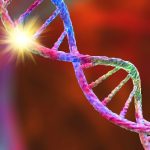 Miscellaneous
Miscellaneous  Miscellaneous
Miscellaneous  History
History 10 Huge Historical Events That Happened on Christmas Eve
 Music
Music 10 Surprising Origin Stories of Your Favorite Holiday Songs
 History
History 10 Less Than Jolly Events That Occurred on December 25
 Weird Stuff
Weird Stuff 10 Funny Ways That Researchers Overthink Christmas
 Politics
Politics 10 Political Scandals That Sent Crowds Into the Streets
 Weird Stuff
Weird Stuff Ten Bizarre Facts About The Doge Meme
 Our World
Our World 10 Ways Your Christmas Tree Is More Lit Than You Think
 Movies and TV
Movies and TV The 10 Coolest Stars to Set Sail on The Love Boat
 History
History 10 Things You Didn’t Know About the American National Anthem
 Miscellaneous
Miscellaneous Top 10 Things Crypto Was Supposed to Change & What Actually Did
 History
History 10 Huge Historical Events That Happened on Christmas Eve
 Music
Music 10 Surprising Origin Stories of Your Favorite Holiday Songs
Who's Behind Listverse?

Jamie Frater
Head Editor
Jamie founded Listverse due to an insatiable desire to share fascinating, obscure, and bizarre facts. He has been a guest speaker on numerous national radio and television stations and is a five time published author.
More About Us History
History 10 Less Than Jolly Events That Occurred on December 25
 Weird Stuff
Weird Stuff 10 Funny Ways That Researchers Overthink Christmas
 Politics
Politics 10 Political Scandals That Sent Crowds Into the Streets
 Weird Stuff
Weird Stuff Ten Bizarre Facts About The Doge Meme
 Our World
Our World 10 Ways Your Christmas Tree Is More Lit Than You Think
 Movies and TV
Movies and TV The 10 Coolest Stars to Set Sail on The Love Boat
 History
History 10 Things You Didn’t Know About the American National Anthem
10 Real Ways Scientists Think Humans Could Evolve Next
Human evolution didn’t stop when we stood upright or invented cities. In fact, it’s still happening—just under new pressures. As technology, climate, medicine, and global lifestyles reshape how we live and reproduce, scientists ask: what’s next? These aren’t science fiction fantasies but real hypotheses based on current evolutionary pressures and long-term trends.
Here are 10 verifiable and fascinating ways scientists believe humans might evolve in the future.
Related: 10 Amazing Origins of Human Body Parts
10 Smaller Brains—Because We Outsource Thinking
While it sounds like dystopian clickbait, the idea that human brains may shrink in the future is backed by fossil records and metabolic logic. Over the last 20,000 years, average brain volume has decreased by about 150 cubic centimeters—roughly the size of a tennis ball.
Some anthropologists suggest this parallels similar reductions seen in domesticated animals, a self-domestication process where less aggression and more social reliance reduce the need for constant cognitive vigilance. In humans, as society became more cooperative and specialized, individuals no longer had to do everything themselves, reducing the need for certain mental strain.
Today, technology further accelerates this trend. We outsource memory to smartphones, navigation to GPS, decision-making to algorithms, and social coordination to apps. Evolutionary biologist David Geary has proposed that as artificial intelligence and digital infrastructure continue to offload mental labor, natural selection might eventually favor smaller but more efficient brains—saving metabolic energy while still enabling us to thrive in tech-driven environments.
The tradeoff wouldn’t mean reduced intelligence overall but less pressure to develop expansive generalist thinking in a world where machines handle much of it.[1]
9 Stronger Immunity to Viruses (Especially Respiratory Ones)
Pandemics are brutal evolutionary filters, and researchers believe they leave lasting genetic fingerprints. Studies of European populations after the Black Death found an increased frequency of immune-related gene variants, such as rs2549794 near the ERAP2 gene, which may have provided resistance to plague bacteria.
Fast forward to today, and researchers analyzing COVID-19 outcomes have identified that some people carry Neanderthal-derived sequences on chromosome 3 that either increase or decrease their risk—depending on the variant. These patterns suggest respiratory pandemics act as selective events on a population level.
As respiratory viruses like influenza and coronaviruses continue circulating—especially in densely populated and interconnected societies—those with certain immune-response genes may consistently fare better. For instance, variations in TLR7 and IFITM3 are associated with how well a person’s immune system responds to early viral replication.
Over time, these gene variants could become more common, especially in regions hit hardest by repeat outbreaks. Immunogenetics is messy and complex, but pandemics function like evolutionary accelerants, and it’s likely that future generations will carry resilience forged in immune system bottlenecks.[2]
8 . A Decline in Wisdom Teeth and Other “Useless” Organs
Wisdom teeth are textbook examples of vestigial traits—body parts that once served a purpose but now mostly cause problems. Early humans had larger jaws and rougher diets, so third molars helped grind down tough roots and raw meat. But as cooking, agriculture, and processed food softened our meals, jaws gradually shortened, leaving no room for the last molars.
Today, impaction and infection are so common that extraction is routine, and dentists often recommend removing them preventively. In fact, evolutionary biologists have found that about 35–40% of people today are born missing at least one wisdom tooth, and the number is rising across generations.
Similar patterns are playing out in other parts of the body. The palmaris longus, a forearm tendon that served arboreal primates in wrist flexion, is missing in about 15% of people without any noticeable deficit. The plantaris muscle, helpful in grasping with the foot, is absent in 9% of the population.
The coccyx, or tailbone, still exists despite serving no function. As surgical removal and reduced usage make these traits even less relevant, they may continue to disappear—not by sudden mutation but by generational fadeout.[3]
7 More Lactose Tolerance—Globally
Lactose intolerance is still the global default. Around 65% of adults worldwide lose the ability to digest lactose after childhood, a trait called lactase non-persistence. However, in populations where dairy farming emerged thousands of years ago—such as Northern Europe, parts of East Africa, and the Middle East—genetic mutations allowing lifelong lactase production took hold.
These populations developed lactase persistence, and those with the trait could derive nutrition from milk during famine or when other food sources were scarce. The most common mutation in Europeans is found near the MCM6 gene, which regulates LCT, the lactase gene. As dairy becomes more globally consumed, selection pressures for lactase persistence may expand.
In Kenya and Sudan, different lactase-persistence mutations have independently appeared and spread through populations due to similar dietary habits. This is a case of convergent evolution—different populations developing the same trait through different genetic paths.
In a future where global diets are standardized and dairy access increases, the ability to digest lactose in adulthood may become less regionally concentrated and more universally common, especially in urban, well-nourished societies.[4]
6 Nearsightedness Becoming the Norm
Rates of myopia have exploded in recent decades, particularly in East Asia. In South Korea, Taiwan, and Singapore, over 80–90% of high school students are nearsighted, compared to under 25% just 60 years ago. A 2016 study in Nature projected that half the global population may be nearsighted by 2050. The spike is driven by behavioral factors—less outdoor time, more screen use, and intensive schooling.
A growing suspicion is that genetic predispositions to myopia are being unintentionally selected for in modern environments. Myopia used to be a serious liability in pre-industrial life. The inability to hunt, farm, or defend oneself likely led to reduced survival and fewer offspring.
However, today, corrective lenses, surgery, and the structure of knowledge economies have removed any reproductive disadvantage. If anything, nearsightedness now correlates with academic success and higher income—traits that may increase the odds of reproduction in some societies. Evolution isn’t just about survival anymore; it’s about which genes remain neutral or helpful in new environments.
For better or worse, blurry distance vision is no longer a disadvantage in most modern societies.[5]
5 Higher Altitude Adaptations Spreading
Three distinct human populations—Tibetans, Andean highlanders, and Ethiopian highlanders—have independently evolved physiological traits that help them survive in low-oxygen environments. Tibetans carry a gene variant in EPAS1, inherited from an ancient hominin species called the Denisovans. It allows them to use oxygen more efficiently without thickening the blood.
Andean populations exhibit increased red blood cell production and lung capacity, while some Ethiopians show genetic resilience to hypoxia without elevated hemoglobin. These are some of the most recent and dramatic examples of human genetic adaptation, arising over just a few thousand years.
Climate change forces populations to migrate, and as cities expand into previously uninhabited altitudes, these adaptive traits could spread through gene flow and natural selection. Already, there is interest in using the genetic insights from highland populations to develop new treatments for cardiovascular and pulmonary diseases.
In a world where people may live in artificial environments like space stations or underground bunkers with limited oxygen, genes that once evolved for mountain survival may become globally advantageous.[6]
4 Changes in Reproductive Timing and Fertility
In many industrialized nations, the average ages for first-time parents have increased dramatically. In South Korea and Italy, for example, women are now giving birth in their mid-30s on average, and fertility rates have fallen below 1.1 children per woman in some regions.
While social and economic factors are the primary drivers, evolutionary biologists are watching to see whether genetic adaptations may follow. Genes related to delayed menopause, extended fertility, and resilience to later pregnancies may be subtly favored in societies where late reproduction becomes the norm.
Assisted reproductive technology (ART), including IVF and egg freezing, is also changing the evolutionary equation. People who might not have reproduced due to infertility or age are now passing their genes on. One potential long-term outcome is a population that is genetically more reliant on medical intervention to reproduce, creating a feedback loop between culture and biology.
This would mark a form of technologically mediated evolution, where reproductive success is no longer determined purely by physical fitness or timing but by access to medical support and the ability to integrate with assisted fertility systems.[7]
3 Resistance to Air Pollution and Industrial Toxins
Air pollution is already the fourth leading cause of death globally, contributing to millions of premature deaths each year. Long-term exposure to fine particulate matter (PM2.5), nitrogen dioxide, and industrial toxins affects lung development, cardiovascular health, and cognitive function.
Some people appear to have genetic variants that provide a degree of resilience, particularly in genes like GSTM1, NQO1, and CYP1A1, which influence how the body processes and detoxifies airborne contaminants [LINK 8]. Studies in heavily polluted cities like Delhi and Beijing have shown different baseline inflammatory responses across populations.
As exposure becomes a chronic part of life in many urban centers, these genetic differences could take on evolutionary significance. Those who are less sensitive to the inflammatory effects of air pollution may be more likely to thrive in megacities, which are projected to house over 70% of the global population by 2050.
If clean air remains a privilege rather than a universal standard, then over generations, natural selection may quietly favor those whose bodies can better handle breathing in poison.[8]
2 Darker Skin in Northern Climates
Historically, human skin pigmentation evolved along a latitudinal gradient: darker near the equator for UV protection and lighter at higher latitudes to synthesize vitamin D in low sunlight. But modern lifestyles are rapidly erasing those environmental pressures. People spend more time indoors, wear UV-blocking clothing, and get vitamin D from fortified foods and supplements rather than sun exposure.
As global migration increases, mixed ancestry becomes more common, and natural selection for lighter skin in northern climates may no longer provide a reproductive advantage. Meanwhile, darker pigmentation provides protection against skin cancer, sunburn, and folate degradation, which are still relevant concerns even in temperate climates.
Combined with global urbanization and the breakdown of region-based genetic isolation, some researchers suggest skin color may converge globally toward a more melanin-rich baseline rather than the pale phenotype favored in high-latitude environments for millennia. Evolution doesn’t reward tradition—it rewards function, and the rules are shifting with every generation born under LED lights and sunscreen.[9]
1 The Emergence of Technologically Integrated Humans
From pacemakers and cochlear implants to prosthetic limbs and insulin pumps, humans have already begun integrating with machines in ways previous generations never imagined. Projects like Elon Musk’s Neuralink, which seeks to embed brain-computer interfaces directly into the skull, are just the tip of what many researchers call transhuman evolution.
If these technologies succeed and become widespread, the traits that favor integration—such as neuroplasticity, immune compatibility, and interface adaptability—may begin to influence reproductive success or long-term health outcomes. Even beyond implants, the growing reliance on wearables, memory aids, and augmented reality suggests a future where survival and productivity are increasingly shaped by our ability to interface with tools.
This isn’t classic Darwinian evolution driven by nature but a new frontier of technological natural selection, where the fittest aren’t just the strongest or smartest—but those who can most effectively merge with machines. In the long run, it may not be Homo sapiens who thrive, but “Homo technologicus,” a species shaped by silicon as much as DNA.[10]








